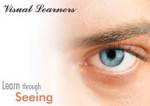 So now we’ve discussed the three different learning styles… visual, auditory, and kinesthetic learning. We also talked about some different options in getting these specific styles into your classes to cater to specific needs. The next thing we can do is explore options in making all three learning styles accessible for all learners in your classroom. This will enable your class to best understand and absorb the materials that you are trying to convey. In a professional environment, the success of your class can make or break your success as a trainer.
So now we’ve discussed the three different learning styles… visual, auditory, and kinesthetic learning. We also talked about some different options in getting these specific styles into your classes to cater to specific needs. The next thing we can do is explore options in making all three learning styles accessible for all learners in your classroom. This will enable your class to best understand and absorb the materials that you are trying to convey. In a professional environment, the success of your class can make or break your success as a trainer.
A common example in a business process environment is a new process or procedure that must be trained out to all of the employees involved in the program. Since the steps of the process are very important to get right in the training, it makes sense to appeal to each and every learner so that they fully understand what needs to be done. Providing the tools that they need to learn is the most important aspect. Your materials should be descriptive and concise, but not too overly complicated. When at all possible, your trainees should have dedicated or materials so that they can follow along.
In this new process, a PowerPoint slide show and you standing up in front of the class yakking away is not going to do enough. You need to get your kinesthetic learners involved as well. With a visual demonstration, such as a PowerPoint deck, you can illustrate what you are trying to teach (Bates College has some good tips on creating a great slide show, we’ll cover more in the future here). Your words and advice help them to learn it using their auditory senses. Finally, they need hands-on practice. This can come in the form of games, exercises, quizzes, or direct hands-on experience. I imagine many people won’t argue with the idea that if they get their hands on the process and practice once or twice, your success rate and retention will increase dramatically.
What about a training that you cannot personally attend or run with a given audience in person? Well, that’s where eLearning comes in. This is usually designed using a specific program (such as Adobe Captivate) or others. This is essentially a self-guided and self-powered learning course, similar to one you might take for an online college class. Iowa State University has a list of pros and cons of eLearning. We will tackle this topic in future blog posts, since it is relatively new to my own experience.
What is one of the best business training classes you’ve had? What did the teacher do to make it successful? In contrast, what is the worst class you’ve taken? Share your stories here!
Photo Credit: Center for Teaching Development

